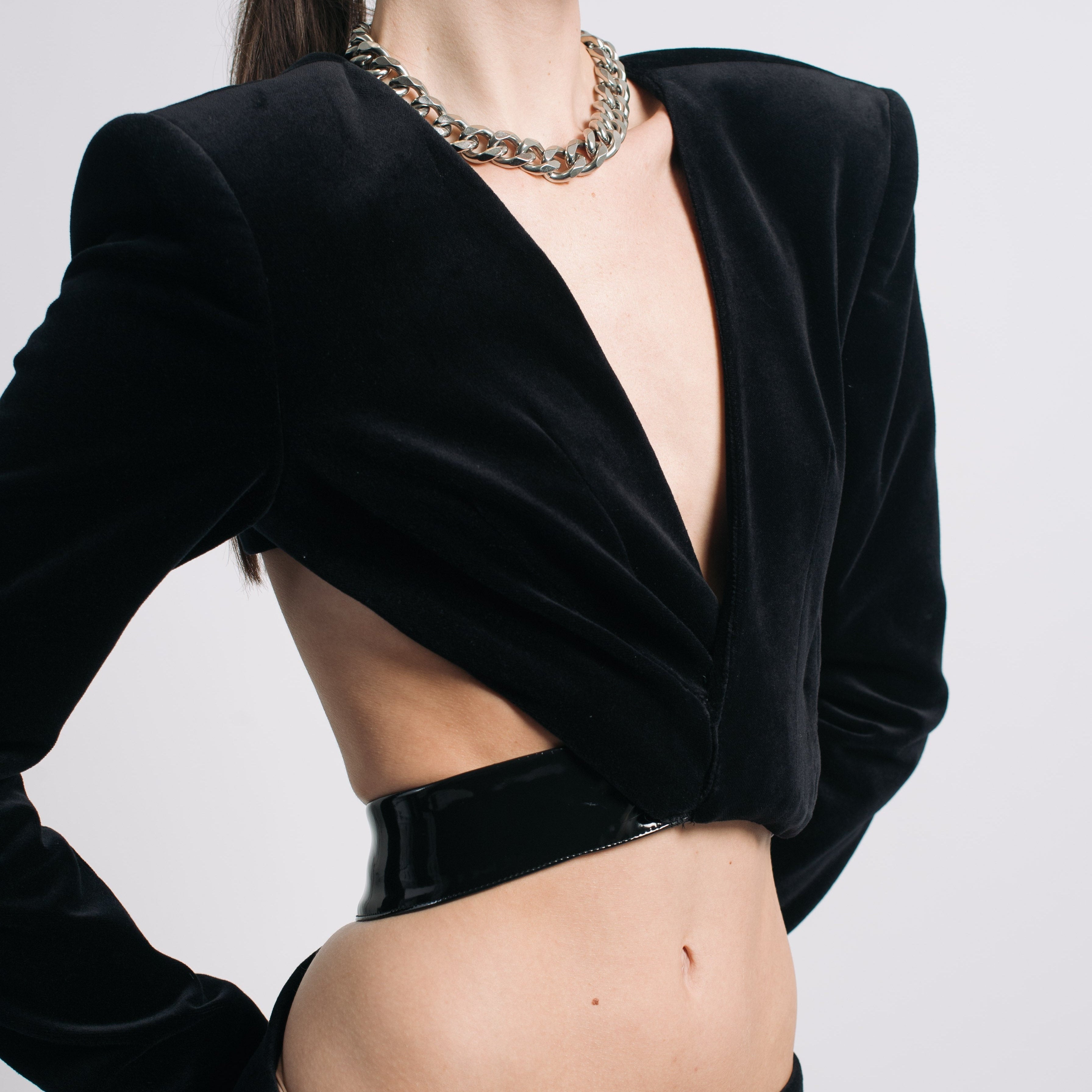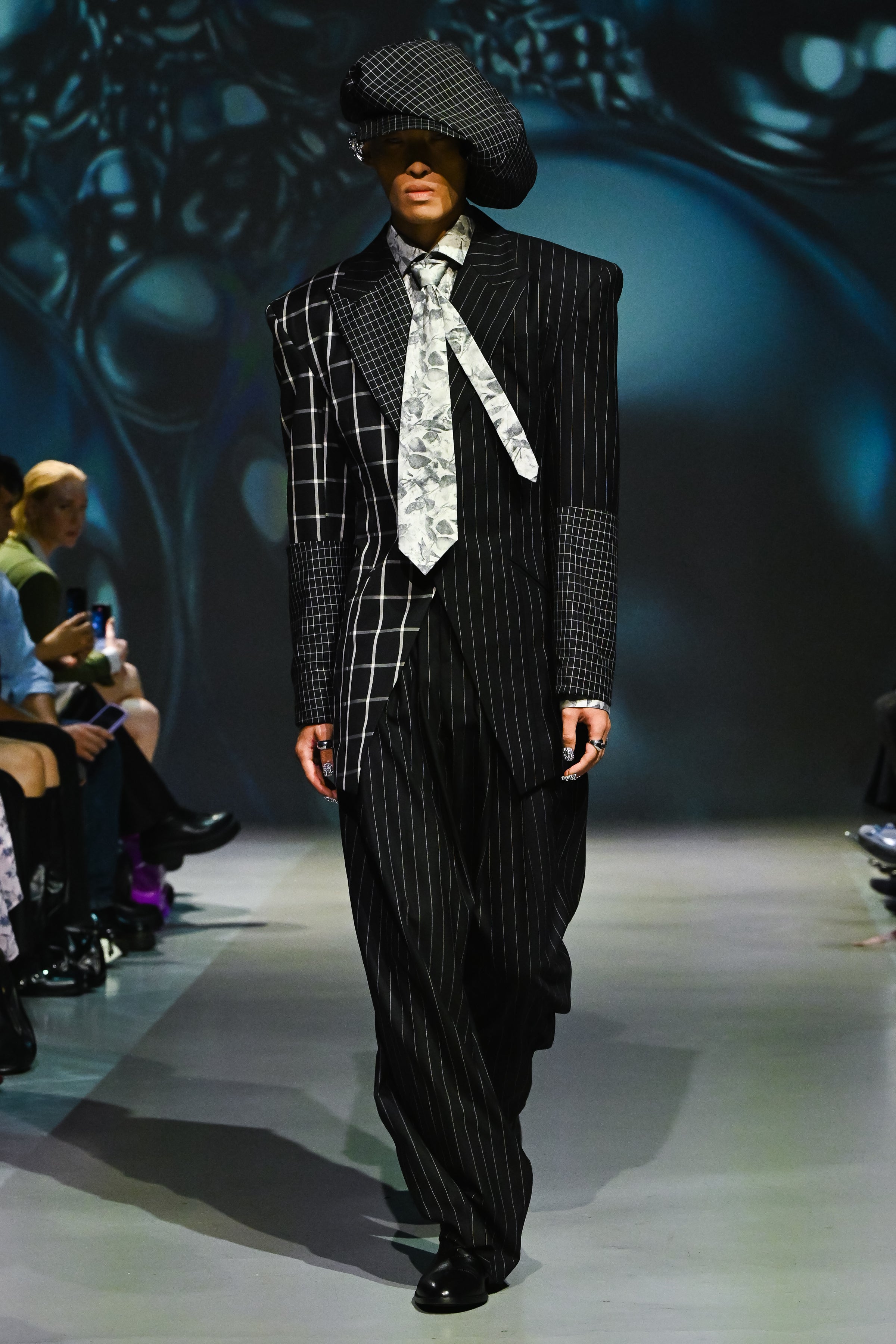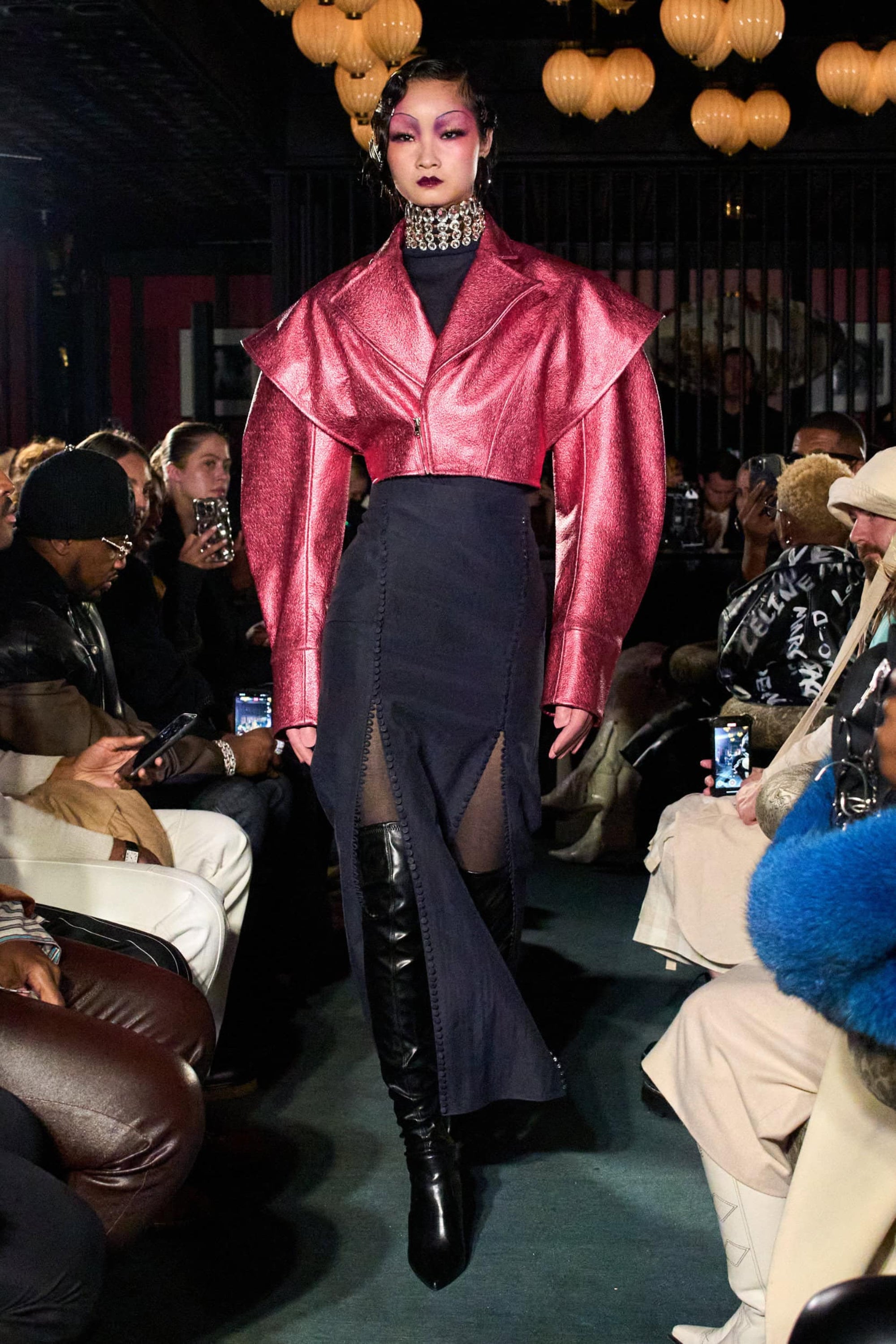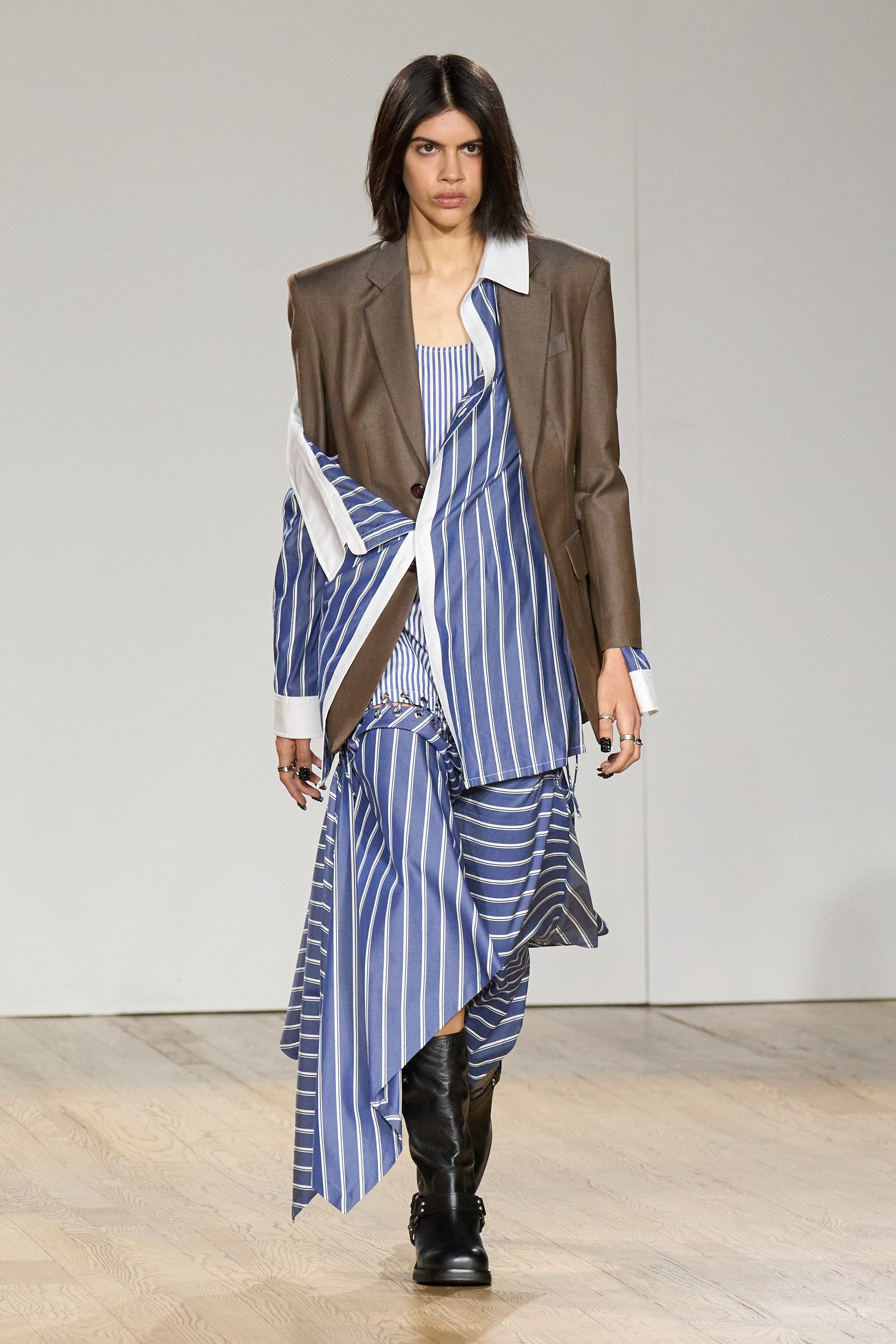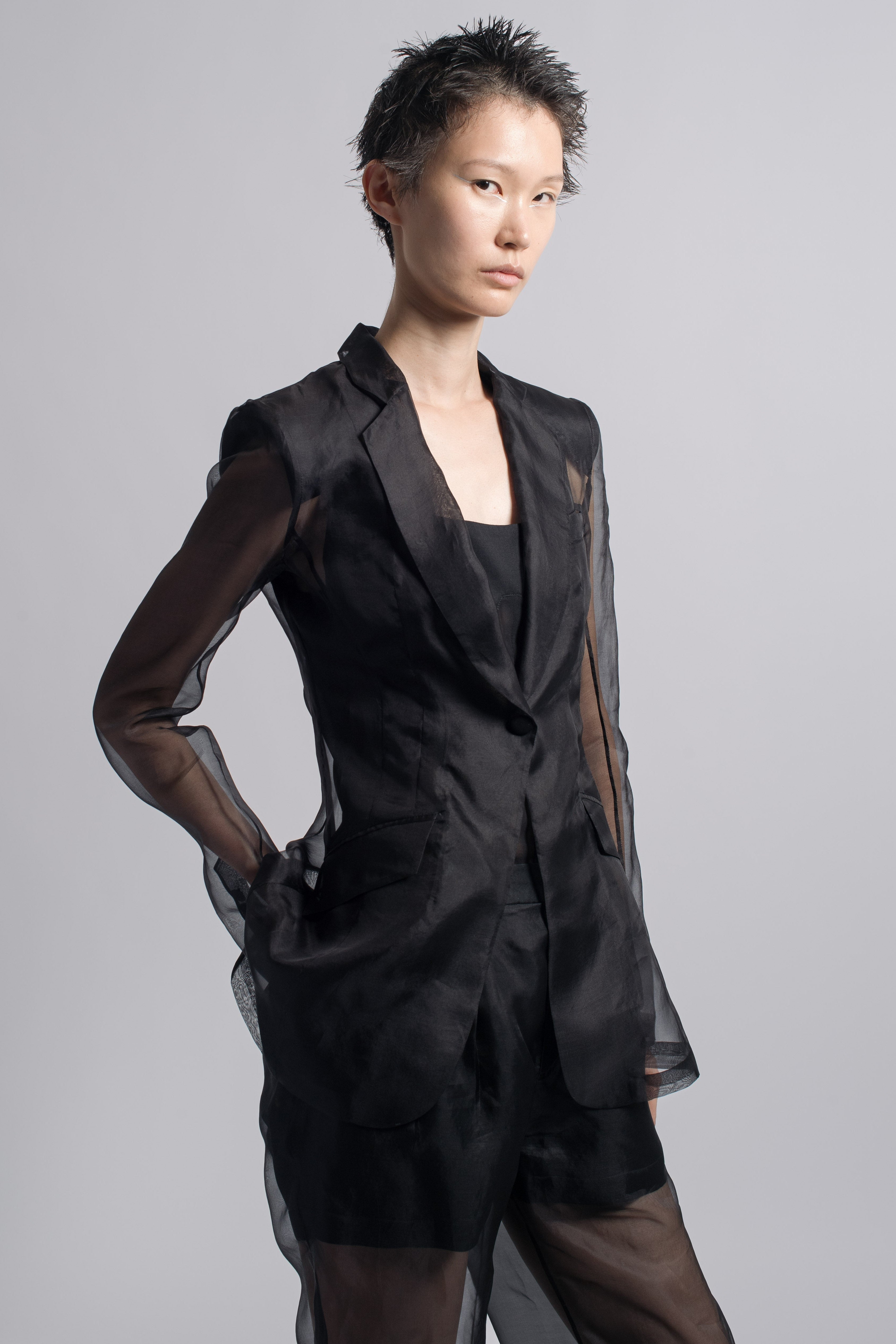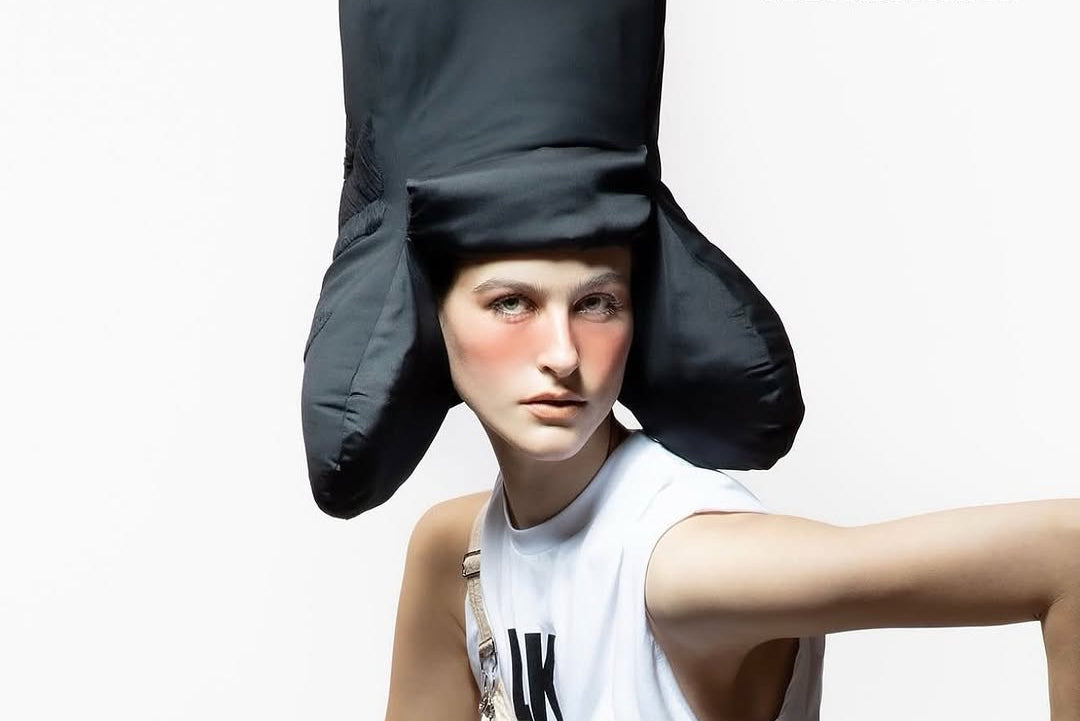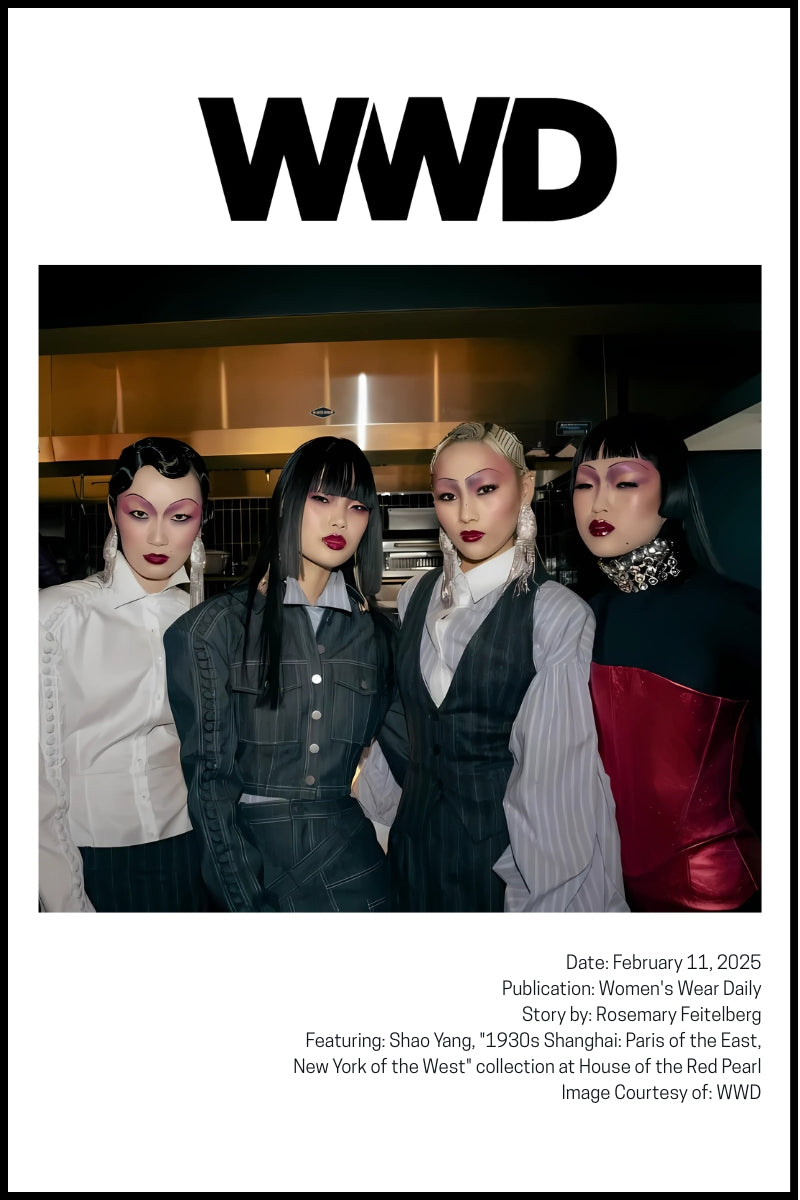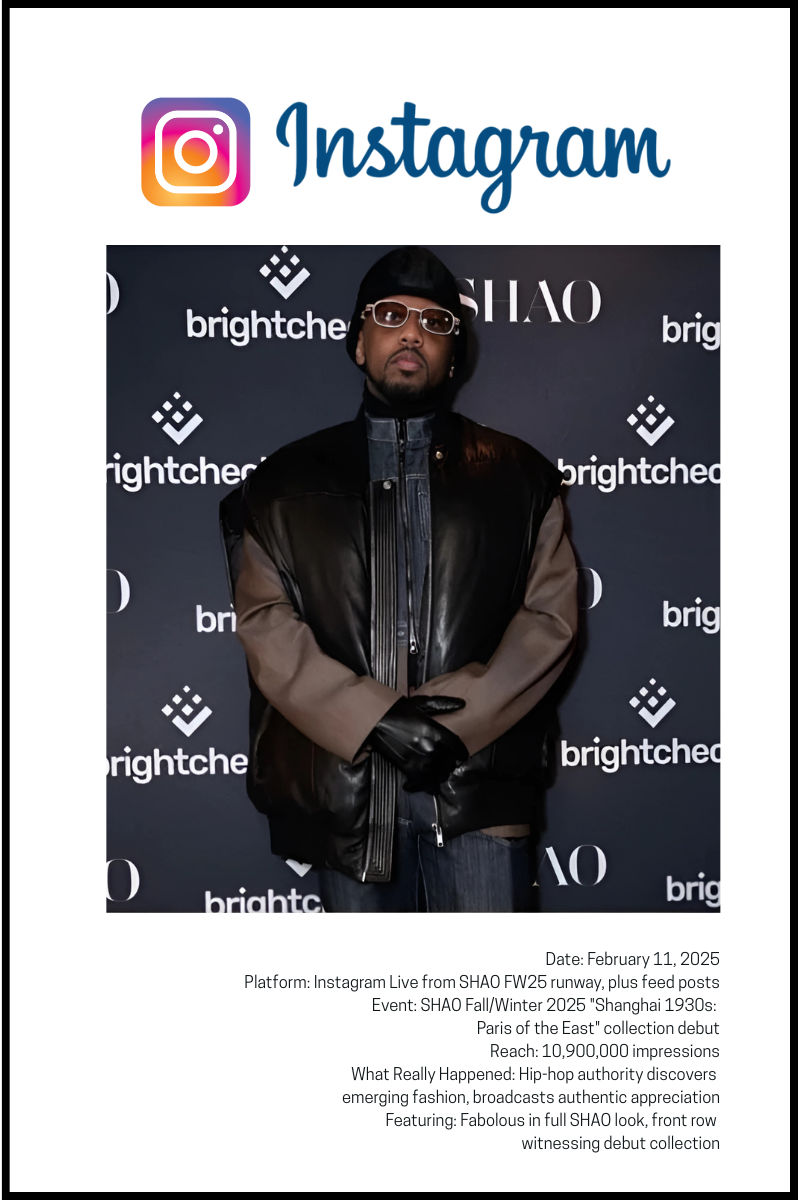Backstage Access Means Business
Here's why the backstage coverage matters more than those pretty runway shots: it's fashion's equivalent of getting invited into the kitchen at a Michelin-starred restaurant. Backstage photography traditionally functions as industry shorthand for "serious construction happening here." It's the difference between documenting how something actually gets made versus just capturing the finished product for consumer consumption.
When The Impression's photographer is backstage at SHAO, they're not there for behind-the-scenes glamour shots. They're documenting technical processes that either validate or expose designer claims about innovation. You get backstage access at Comme des Garçons because their pattern-making defies conventional construction logic. You see it at Issey Miyake because their technical innovation creates entirely new possibilities for how fabric behaves on human bodies.
The Impression treating SHAO with similar seriousness suggests they recognize comparable technical merit in this cultural synthesis approach. The "Shanghai 1930s: Paris of the East" collection concept provides perfect framework for this kind of technical examination because that historical moment represented the last time Eastern and Western fashion traditions existed in genuine dialogue rather than hierarchical relationship.
Shanghai during the 1930s was this incredible laboratory where qipao construction influenced European silhouettes as much as Western tailoring shaped Chinese garment design. SHAO's contemporary interpretation requires actual technical fluency in both traditions—not just aesthetic sampling from either side. The backstage documentation reveals whether this cultural synthesis operates as genuine technical innovation or simply surface-level cultural referencing applied to familiar Western construction methods.
What those backstage photos capture—the specific seaming techniques, finishing methods, pattern adaptations—distinguishes authentic cultural fusion from cosmetic cultural borrowing. It's the difference between actually speaking two languages fluently versus just knowing enough phrases to order dinner.
The Economics of Going All-In
Publications like The Impression don't operate with unlimited editorial budgets, which makes their comprehensive coverage decisions particularly telling. They're not covering SHAO because someone bought advertising space or because it's this season's trending topic. They're covering it because their editorial team genuinely believes this represents fashion direction worth sustained analysis rather than momentary documentation.
That's a significant bet for a publication to make. Traditional luxury houses coast on century-old heritage narratives and established cultural capital—they've already proven their relevance through historical continuity. Contemporary brands like SHAO have to earn cultural authority through demonstrated innovation and authentic positioning that can withstand serious critical examination.
The Impression's triple-feature approach creates editorial framework that positions SHAO alongside established designers whose work merits serious industry consideration. More importantly, it signals to other fashion industry participants that SHAO represents something more substantial than emerging talent or seasonal trend phenomenon.
This kind of institutional recognition affects everything from how buyers approach the brand to how other media outlets frame their coverage. It's the fashion equivalent of getting your first serious restaurant review—suddenly everyone starts paying attention differently.
Industry Recognition vs. Consumer Hype
Most fashion coverage gets this completely backwards by focusing on consumer appeal when the real action happens in industry recognition. Consumer fashion media creates images that translate designer vision into purchasable desire through careful reality editing. Industry coverage functions more like technical documentation—focusing on construction methodologies, cultural positioning, and business implications that extend beyond seasonal trend cycles.
The Impression's SHAO coverage operates firmly within this industry context, treating the brand as case study in contemporary luxury fashion evolution rather than aesthetic phenomenon designed for Instagram consumption. The complete runway coverage presents all collection looks rather than cherry-picking visually striking pieces—an editorial approach that requires long-term cultural relevance assessment rather than immediate commercial considerations.
This distinction matters because it reveals whether cultural synthesis represents genuine innovation or simply aesthetic problem-solving designed to appeal to contemporary diversity expectations. Industry documentation provides evidence for evaluating approaches based on technical merit rather than promotional potential.
The comprehensive approach also enables critical examination of how cultural synthesis actually functions within commercial fashion production. Consumer fashion coverage often obscures actual production processes behind aspirational imagery, but industry documentation reveals how collection concepts translate into wearable reality versus editorial fantasy.
Shanghai 1930s as Cultural Method
Most designers treat historical references like aesthetic mining—extracting visual elements from past eras to create contemporary collections that reference without necessarily understanding the cultural conditions that originally made such aesthetics meaningful. SHAO's "Shanghai 1930s" concept operates more like cultural archaeology, attempting to understand and recreate the conditions that enabled genuine East-West synthesis during that specific historical moment.
The city during the 1930s represented something unprecedented in global fashion history—a place where Eastern and Western design traditions influenced each other through actual cultural exchange rather than colonial imposition or contemporary appropriation dynamics. It functioned as this incredible laboratory for cultural fusion where different aesthetic systems interacted organically rather than hierarchically.
The Impression's documentation captures how SHAO's interpretation functions as methodology rather than simple inspiration. The collection doesn't just reference 1930s Shanghai aesthetics; it attempts to understand the cultural mechanics that made genuine synthesis possible during that period, then applies those mechanics to contemporary design challenges.
This methodological approach distinguishes SHAO from designers who approach cultural fusion as aesthetic problem-solving—mixing elements from different traditions to create visually interesting results without necessarily understanding the cultural conditions that originally made such synthesis meaningful or sustainable.
Those backstage photos document how this methodological approach translates into specific construction decisions—pattern modifications that accommodate cultural synthesis at the technical level rather than applying cultural references as surface decoration to familiar Western silhouettes.
Global Fashion Publishing Evolution
The Impression's comprehensive SHAO coverage represents broader evolution in fashion criticism toward technical documentation and cultural analysis rather than simple aesthetic appreciation or trend prediction. Contemporary fashion audiences demonstrate increasing sophistication about construction processes, cultural authenticity, and industry economics that affect fashion production and cultural positioning.
This multi-feature coverage format creates editorial precedent for evaluating cultural synthesis as legitimate fashion methodology rather than experimental approach to contemporary diversity expectations. The precedent affects how other industry stakeholders approach emerging brands that prioritize cultural authenticity over traditional luxury fashion markers.
More significantly, it suggests contemporary fashion criticism values substantive cultural synthesis over surface-level aesthetic innovation or commercial trend prediction. The Impression's coverage provides technical documentation and cultural analysis that supports informed evaluation of designer credibility and collection significance rather than simply promoting visual consumption.
This evolution creates opportunities for emerging brands to access industry recognition through demonstrated cultural merit rather than traditional pathways depending on heritage narratives or established cultural capital. The comprehensive coverage demonstrates how authentic cultural synthesis can generate fashion industry credibility independently of traditional apprenticeship systems or luxury brand association.
The implications extend beyond individual brand coverage to broader questions about how fashion industries evaluate cultural authenticity and technical innovation within global commercial contexts requiring navigation of multiple cultural traditions while maintaining commercial viability and artistic integrity.
Technical Innovation Within Cultural Responsibility
The backstage documentation reveals how SHAO navigates technical challenges specific to cultural synthesis fashion—construction methods that honor multiple traditions while creating garments suitable for contemporary wear patterns and commercial production requirements. These technical considerations often get overlooked in fashion coverage prioritizing visual impact over construction complexity.
The "Shanghai 1930s" collection concept requires understanding how traditional qipao construction techniques translate into contemporary fashion production while maintaining cultural integrity and technical authenticity. This translation process involves pattern-making decisions affecting everything from garment fit to finishing details, creating technical challenges that don't exist when designers work within single cultural frameworks.
Those backstage photos provide evidence for evaluating whether SHAO's approach represents genuine innovation or simply aesthetic borrowing applied to familiar construction methods. The technical details captured—seaming approaches, finishing techniques, pattern adaptations—distinguish authentic cultural fusion from surface-level cultural referencing.
This technical documentation serves broader fashion industry conversations about cultural responsibility and authentic innovation within commercial production contexts. The comprehensive coverage demonstrates how cultural synthesis can create new technical possibilities while maintaining respect for traditional methods and cultural meanings that inform contemporary design decisions.
The approach also reveals how emerging designers can navigate cultural responsibility questions while building commercially viable brands that contribute to broader cultural conversations about authenticity, innovation, and cross-cultural creative collaboration within global fashion systems.
Whether this methodological approach to cultural synthesis scales beyond individual editorial features remains the defining question for brands attempting authentic cultural fusion within commercial luxury fashion contexts. The Impression's coverage suggests one possible answer: that authentic cultural synthesis creates its own market by offering experiences that existing luxury fashion cannot duplicate or easily commodify.
The cultural conversation this coverage enables—about technical innovation, cultural responsibility, and authentic creative collaboration—represents broader possibilities for how fashion can function as cultural bridge-building rather than simple aesthetic expression or commercial trend following within increasingly interconnected global creative economies.
Cited Sources:
-
The Impression. "SHAO Fall 2025 Show Backstage." February 11, 2025. https://theimpression.com/shao-fall-2025-fashion-show-backstage/
-
The Impression. "SHAO Fall 2025 Fashion Show." February 11, 2025. https://theimpression.com/shao-fall-2025-fashion-show/
-
The Impression. "Best Backstage Photos From New York Fashion Week Fall 2025." February 13, 2025. https://theimpression.com/best-backstage-photos-from-new-york-fashion-week-fall-2025/
